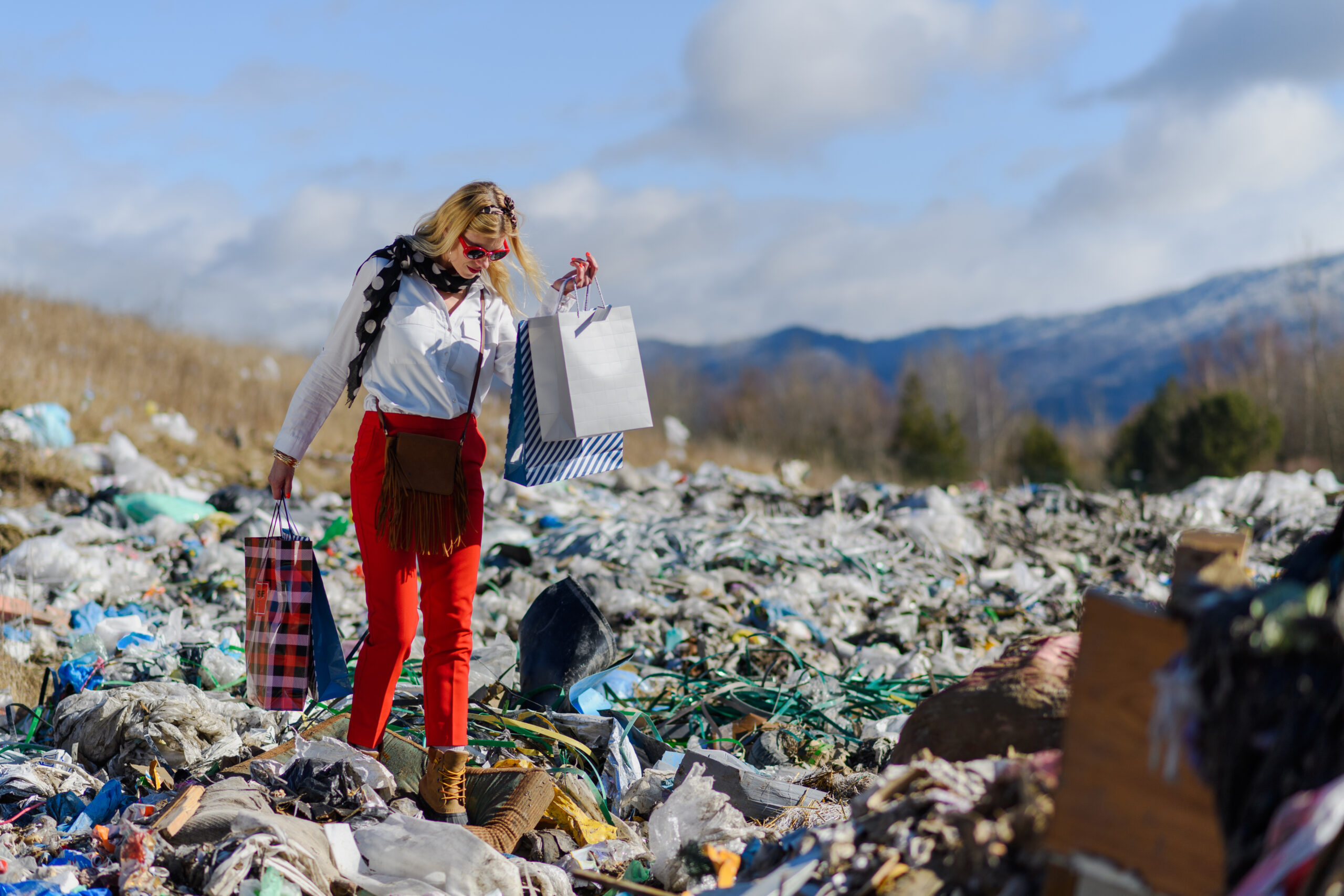Sustainable fashion is important for both businesses and the world. Learn how ethical sourcing, circular fashion, and mindful consumerism can reduce waste, lower carbon footprints, and promote fair labor practices. Discover how brands can implement sustainability while improving transparency, customer trust, and long-term business success

Table of Contents
Keywords
Let's be honest, it's tempting to chase after new clothes. In a fast-fashion world, trending styles appear constantly, making it hard to resist. And who can blame you? The ‘churn and spout’ approach of clothing production easily makes it addictive to keep returning to—even among Gen Z who express strong support for sustainable clothing, yet still regularly shop at fast fashion retailers.
But behind the exquisite bargains and the fleeting outfits lies a harsh reality: the fashion industry's detrimental impact on our planet and its people is staggering. From the overuse of natural resources, to its contribution to 10% of global carbon emissions, and exploitative labor practices, the true cost of our clothing is far higher than what we pay at the checkout.
However, the world isn’t completely sold on reckless consumerism. Despite the industry’s influence, people still strive for sustainability through sustainable fashion. But why? What makes it a strong alternative to fast fashion? Let’s first dive in.
To understand why sustainable fashion matters, look no further than the environmental impact of today’s fashion industry.
Each year, approximately 92 million tonnes of textile waste are generated by the fashion industry, with most garments tragically ending up in landfills or incinerators, contributing to pollution and carbon emissions at the end of their lifecycles.
The industry also uses 93 billion metric tons of fresh water annually.
Additionally, in their relentless pursuit of profit, fast fashion brands mass-produce affordable clothing to keep up with the constantly shifting market trends. They achieve this by outsourcing production to low-cost labor markets where worker wages are minimal and labor laws are often lenient. This practice drastically reduces costs for the brands, allowing them to offer clothing at incredibly cheap prices, but takes advantage of lower income communities with less restrictive labor laws.
The fashion industry also has some of the highest return rates in retail, often driven by low-quality materials that wear out quickly and impulse purchases encouraged by cheap prices. That said, the primary reason fashion companies experience high return rates is because of inconsistent sizing; in fact, 58% of consumers cite sizing discrepancies as their primary reason for returning items. These frequent returns contribute massively to the fashion industry’s carbon footprint, with shipping and returns accounting for 37% of the industry’s greenhouse gas emissions. Worse yet, the return process alone adds an additional 30% to the carbon footprint already generated by the initial delivery.
This is where sustainable fashion steps in, swapping fast fashion’s reckless shortcuts for ethical production, transparency, and the principles of the circular economy. Unlike the the traditional fashion industry, it promotes mindful consumption by offering finely made, durable clothing produced from organic or recycled materials, reducing environmental and water pollution while maintaining a timeless appeal (so your clothes look as good as they are made)!
Sustainable fashion embraces the circular economy by reducing textile waste and resource depletion. It encourages resale and upcycling projects, ensuring that clothing stays in use for as long as possible rather than ending up in landfills. Sustainable fashion puts a focus on ethical labor practices, guaranteeing fair wages, safe working conditions, and reasonable hours for workers.
Furthermore, sustainable fashion reduces returns by educating consumers on mindful purchasing decisions, helping them choose the right fit before buying. 62% of consumers agree that having more precise product information upfront lowers their likelihood of returning an item. Through detailed product descriptions and honesty about their materials and production, ethical brands empower shoppers to make informed choices, reducing unnecessary returns.
Ultimately, sustainable fashion improves the customer experience. The growing demand for responsible consumption is met by consumers who feel confident and fulfilled, knowing their choices support ethical decisions and a lighter environmental footprint—proving sustainable fashion's growth is powered by conscious customers!
So we know the impact that the fashion industry can have on the environment, but what exactly does actual sustainable fashion look like?
Sustainable fashion refers to a clothing supply chain that prioritizes organic or recycled materials and ethical labor practices. Just like its name suggests, the aim of sustainable fashion companies is to reduce environmental impact by using eco-friendly materials, minimizing waste, and ensuring fair working conditions.
There are various types of sustainable fashion that brands practice:
All these various types of sustainable fashion—in all their glorious shades of green—drive a crucial change towards a more environmentally responsible industry, proving that both style and ethics can coexist!
Well it’s quite easy! Fashion brands can become more sustainable by implementing ethical, circular practices across their supply chains. Here’s how:
As I mentioned before, by clearly communicating how a product came to be, supply chain details, and sustainability efforts, brands can allow customers to make informed, responsible purchases—building trust between consumer and brand. Product Information Management (PIM) system plays a crucial role in this by centralizing and standardizing product data, ensuring that accurate details about materials, certifications, and ethical production practices are easily accessible and enriched. By integrating PIM solutions, brands can provide consistent and transparent product information across all sales channels, helping consumers make more sustainable choices while also enhancing trust and brand loyalty.
One of the most impactful ways fashion brands can become more sustainable is by choosing eco-friendly fabrics that reduce resource consumption and pollution. Sustainable materials help lower water usage, carbon emissions, and chemical pollution. Materials like organic cotton that uses less water and has no synthetic pesticides compared to conventional cotton, or linen which is durable as well as biodegradable. By shifting to these sustainable materials, brands can significantly reduce their environmental footprint while still producing high-quality garments!
The production phase is one of the most resource-heavy parts of fashion. Brands can adopt cleaner, more efficient manufacturing methods to minimize waste and pollution. This can be achieved through approaches like waterless dyeing technologies like CO2 dyeing or digital printing which can significantly cut water pollution. Or even by using plant-based, biodegradable dyes instead of harmful synthetic chemicals, making them non-toxic and natural. The choices are endless!
Clothes don’t just appear out of thin air—they're made by people. See, sustainability isn’t just about environmental impact; social responsibility is equally important. To be truly sustainable, fashion brands must ensure that their supply chains are free from exploitation and that their workers are treated fairly. By partnering with Fair Trade-certified suppliers, eliminating forced labor, providing fair wages, and improving factory safety standards, brands can create safe and ethical working conditions.
Fast fashion’s reliance on overproduction leads to massive textile waste. To counter this, sustainable brands must adopt slow fashion which focuses on producing timeless, permanent collections instead of chasing micro-trends. This is done by focusing on the materials used to make clothes and ‘slowing’ down the process of how they’re made. The idea isn’t to make tons of items that match the latest trend but to make products that can last years for customers. By producing only what is needed, brands can reduce waste, lower emissions, and operate more efficiently.
A circular economy ensures that clothing stays in use for as long as possible rather than being discarded after a few wears. Brands can implement recycling programs which is an essential way to incorporate sustainable fashion—encouraging customers to return old clothing for recycling or resale. Brands can also accomplish this with reverse logistics, giving clothes a second life by having them recycled, repaired, repackaged, etc. Embracing a circular approach allows brands to reduce waste, lower carbon footprints, and create a more sustainable business model.
The impact of fashion extends beyond clothing—packaging, shipping, and logistics also play a huge role in sustainability. Brands can reduce their environmental footprint by using recycled or compostable packaging. Ultimately, this avoids unnecessary plastic waste by opting for biodegradable or recyclable materials. Even small changes in packaging and logistics can significantly reduce carbon emissions!
As the fashion industry faces growing scrutiny for its environmental damage, exploitative labor practices, and massive waste it generates, it’s clear that a shift towards ethical and eco-friendly alternatives is essential. By embracing ethical supply chains, circular fashion, and mindful consumption, we can reduce the industry’s carbon footprint, preserve natural resources, and ensure fair treatment for workers.
And let’s face it—no one looks good in environmental guilt. Every purchase is a chance to vote for a more sustainable future, whether by supporting brands that value transparency, fair wages, and eco-friendly materials, or simply just buying less but better! The future of fashion should be as smart as it is stylish, and by making sustainability the norm, we can dress for the world we want to create—one thoughtfully chosen piece at a time.
Discover how to avoid the pitfalls of greenwashing and build genuinely sustainable strategies that foster trust, align with regulations, and drive long-term business growth.
